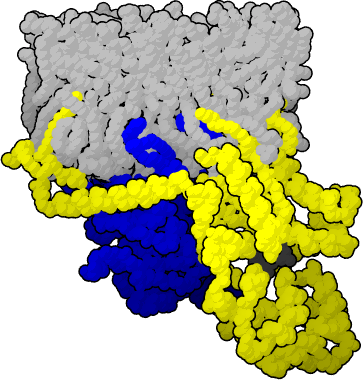Team:Illinois/Antibody GPCR Fusion
From 2008.igem.org
m (→G Proteins) |
m (→Core Team Members) |
||
| Line 15: | Line 15: | ||
[[User:Dluedtk2|Dave Luedtke]], [[User:Bhadidi|Bobak Hadidi]], [[User:kselvad2|Kiruthika Selvadurai]], [[User:nbakshi2|Namita Bakshi]], [[User:Tespina2|Toni Espina]], [[User:Sgrajdu2|Sarah Grajdura]] | [[User:Dluedtk2|Dave Luedtke]], [[User:Bhadidi|Bobak Hadidi]], [[User:kselvad2|Kiruthika Selvadurai]], [[User:nbakshi2|Namita Bakshi]], [[User:Tespina2|Toni Espina]], [[User:Sgrajdu2|Sarah Grajdura]] | ||
| - | + | Add yourself! | |
==Project Abstract== | ==Project Abstract== | ||
Revision as of 19:19, 13 June 2008
| Home | The Team | Notebook | Research Articles | Protocols | The Project | Pictures | Parts Submitted to the Registry |
|---|
Contents |
Core Team Members
Dave Luedtke, Bobak Hadidi, Kiruthika Selvadurai, Namita Bakshi, Toni Espina, Sarah Grajdura
Add yourself!
Project Abstract
G protein-coupled receptors, or GPCRs, are transmembrane receptors that sense extracellular objects on the scale of small molecules to large proteins. Activation of the GPCR by ligand binding begins a signal transduction pathway that ultimately results in the transcriptional activation or repression of one or more genes. The signal is transduced with G-proteins, which are signalling proteins that associate with GTP and GDP, as well as kinase cascades. Yeast cells are known to utilize two GPCRs signal transduction pathways, one to detect the presence of glucose and the other to initiate mating. We hope to engineer the well-characterized mating pathway to produce a colorimetric change in the cell upon detecting a novel molecule-- a surface protien of some water-borne pathogen, or possibly a toxin secreted by such a water-borne pathogen. One issue that may have to be dealt with is the cell wall of the yeast: it may prevent the target protein from drawing near enough to the receptor to activate it.
Specific Plans, Supplies, and Protocols
In theory, this is how we will progress:
- Create a fusion protein that links an antibody against cholera toxin to the Ste2 GPCR of S. cereviviae, the pheremone response GPCR.
- 1)Find the sequences of the GPCR and the antibody
- 2)Select site of fusion
- 3)Have the gene sequenced
- Express the antibody/GPCR fusion protein in yeast that lack the wild type receptor.
- Measure the activation of the GPCR by the toxin (and by the natural pheremone) using a reporter gene.
- Use site specific directed evolution to increase the effectiveness of the new GPCR.
Meetings
Fri. June 13th we will meet on the first floor of Grainger by the computers at 1:00pm
To Research
- Cell Wall Issue
- Antibody Sequence
- Sources of yeast strains deficient in specific genes
- Cholera Toxin or possible target protein
G Proteins
G proteins are comprised of 3 subunits, collectively known as a heterotrimeric or large G protein. The individual pieces are Gα, Gβ and Gγ. When the appropriate molecule is bound to the outside receptor, the GDP bound to the Gα unit becomes GTP. More conformational changes are induced causing Gβγ and Gα to dissociate. Depending on the signal cascade, either complex, Gα-GTP or Gβγ may now induce the appropriate linked signal pathway.
 "
"
